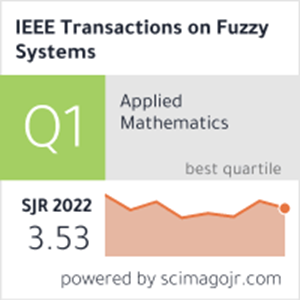Dual Anchor Graph Fuzzy Clustering for Multiview Data
IF 10.7
1区 计算机科学
Q1 COMPUTER SCIENCE, ARTIFICIAL INTELLIGENCE
引用次数: 0
Abstract
Multiview anchor graph clustering has been a prominent research area in recent years, leading to the development of several effective and efficient methods. However, three challenges are faced by current multiview anchor graph clustering methods. First, real-world data often exhibit uncertainty and poor discriminability, leading to suboptimal anchor graphs when directly extracted from the original data. Second, most existing methods assume the presence of common information between views and primarily explore it for clustering, thus neglecting view-specific information. Third, further exploration and exploitation of the learned anchor graph to enhance clustering performance remains an open research question. To address these issues, a novel dual anchor graph fuzzy clustering method is proposed in this article. First, a novel matrix factorization-based dual anchor graph learning method is proposed to address the first two issues by extracting highly discriminative hidden representations for each view and subsequently deriving both common and specific anchor graphs from these hidden representations. Then, to address the third issue, a novel anchor graph fuzzy clustering method is developed with cooperative learning to exploit and utilize the common and specific anchor graphs fully. Meanwhile, a fuzzy membership structure preservation mechanism with dual anchor graphs is constructed to enhance clustering performance. Finally, negative Shannon entropy is further introduced to adaptively adjust the view weighing. Extensive experiments on several datasets demonstrate the effectiveness of the proposed method.多视角数据的双锚图模糊聚类
本文章由计算机程序翻译,如有差异,请以英文原文为准。
求助全文
约1分钟内获得全文
求助全文
来源期刊

IEEE Transactions on Fuzzy Systems
工程技术-工程:电子与电气
CiteScore
20.50
自引率
13.40%
发文量
517
审稿时长
3.0 months
期刊介绍:
The IEEE Transactions on Fuzzy Systems is a scholarly journal that focuses on the theory, design, and application of fuzzy systems. It aims to publish high-quality technical papers that contribute significant technical knowledge and exploratory developments in the field of fuzzy systems. The journal particularly emphasizes engineering systems and scientific applications. In addition to research articles, the Transactions also includes a letters section featuring current information, comments, and rebuttals related to published papers.
 求助内容:
求助内容: 应助结果提醒方式:
应助结果提醒方式:


